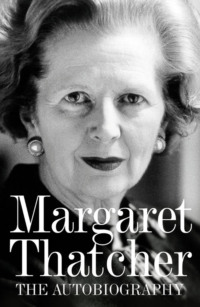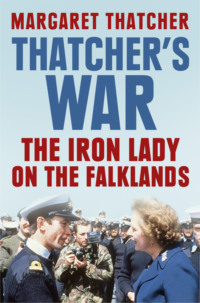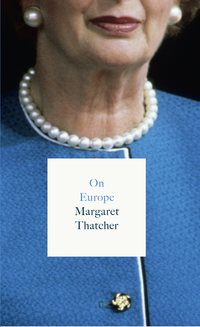
Полная версия
Statecraft
Russia has for centuries grown used to compensating for its economic underdevelopment by means of its military strength. For the Soviet Union, particularly in the last decades of its existence, such an approach was the only means of remaining a superpower. Today’s Russian leaders appear to have inherited something of that outlook.
But only something – for although it has over a million military personnel, and its defence spending still probably runs at over 5 per cent of GDP, the state of Russia’s armed forces as a whole is pitiful.* Non-payment of wages or payment in kind has left soldiers and sailors in some areas forced to grow cabbages or to engage in black-marketeering to avoid starvation. Morale and discipline are generally bad.
This has made some Russian generals and politicians keen to maximise the effectiveness of their most sophisticated weaponry. Both President Yeltsin and President Putin have emphasised the central importance of Russia’s nuclear defence. In November 1993 Russia’s new military doctrine both ended the previous Soviet pledge of ‘no first use’ of nuclear weapons and outlined more flexible options for their use. In April 1999 President Yeltsin responded to the opening of NATO’s bombing campaign against Serbia by holding a special meeting of his Security Council on the subject which he opened by stating that ‘nuclear forces were and remain the key element in the national security strategy and Russia’s military might’. Mr Putin chose to make one of his first visits as President to a centre for nuclear weapons research at which he told his audience: ‘We will retain and strengthen Russia’s nuclear weapons and its nuclear complex.’ The symbolism and the message were clear.
Russia has been concentrating on the development of a new generation of missiles and warheads, while seeking to extend the life of existing weapons systems. The most important new programme is that of the SS-27 Topol-M Inter-Continental Ballistic Missile (ICBM). Russia’s problem is that the cost of maintaining any kind of nuclear parity with the United States is likely to be prohibitive, given the rate at which Russia’s existing arsenal is becoming obsolete.
President Putin was widely praised in the West for having secured the Russian Duma’s endorsement of the START II treaty. He has more recently called for further substantial reductions to America’s and Russia’s nuclear arsenals. The driving force for these proposals is penury rather than mere goodwill. But they may well make sense all the same. For as long as Russia continues to hold a nuclear arsenal which it cannot afford properly to maintain, the rest of the world will be at risk of such weapons falling into the wrong hands or of an accidental launch. Furthermore, Russian scientists and advanced technology must if at all possible be kept in Russia to be productively redirected, not put up for sale to the highest international bidder.
Another potential worry for the West is posed by the former Soviet Union’s chemical and biological weapons capability. Such weapons are notoriously difficult to detect by ordinary verification techniques. They can be easily hidden, as we know from Saddam Hussein’s activities in Iraq. They can also be developed alongside or under cover of ordinary commercial, civilian processes. Three Russian officials have been reported as saying that Russia has twenty-four poison gas factories, six of which it plans to destroy and eighteen of which it has either converted or will convert to non-military uses.* Unfortunately for us, the Soviet Union’s biological weapons programme was very closely integrated into ostensibly civil programmes of research. There are worries about how far the necessary disentanglement has gone. Above all, however, it is the possibility of such weapons developed covertly in a Russian laboratory falling into the hands of rogue states or terrorists that is the main worry.
In the end, it is probably upon the massed if uneven ranks of the Russian army that any credible projection of Russian power depends. At present Russia’s armed forces are demoralised and their resources depleted. But it would not be wise to assume that this will always be so. The Russians are traditionally a martial nation. While it is most unlikely that Russia will ever again be a global superpower, it will remain a great power – too big to rest content within its own borders, too weak to impose itself far beyond them. All of which makes for troubling instability.
But the West has to cope. How?
We must never forget that Russia has a huge arsenal of weapons of mass destruction. So some of the most important Western aid programmes are those, like the Nunn—Lugar programme aimed at ensuring proper oversight of Russia’s nuclear weapons, which satisfy our own security needs. Indeed, in all our dealings with Russia, the right approach is to put our security interests always and everywhere first
We must try to persuade Russia that its willingness to sell military technology to rogue states may well rebound against Russians – both for reasons of basic geography and in view of Russia’s problems in its relations with much of the Muslim world
Finally, we dare not take Russia for granted: the seeds of danger are often planted in the soil of disorder, as the world has learned to its cost before.
NATIONALITY PROBLEMS AND THE ‘NEAR ABROAD’
Russia is a huge country that covers eleven time zones. Its border – thirteen thousand miles of it – is the longest in the world, running from Europe to Eastern Asia. This gives Russia a unique opportunity to interfere in other countries’ affairs – particularly because so many of its neighbours were for so long subject to Moscow’s domination.
The fact that Russia’s nation-building and its territorial expansion were in tsarist times so closely interlinked means that Russia has traditionally regarded its frontiers as fluid not fixed. The Cold War stasis lent an appearance of permanence to the Soviet Union’s external perimeter. But with the disintegration of the USSR into Russia and fourteen other independent states that situation ended.
Russia itself felt vulnerable, and this vulnerability explains some – though not all – of the subsequent aggressive rhetoric and manoeuvring. Some twenty-five million ethnic Russians remained living outside the frontiers of the new Russian Federation after the winding up of the Soviet Union. For Russians this diaspora’s existence is both a reason and an excuse to claim the potential right to intervene in other former Soviet republics. On the other hand, the population of the Russian Federation is far from homogeneous: almost 20 per cent of the Federation’s inhabitants are non-Russian. The loyalties and aspirations of these non-Russian nationalities are among Russia’s least soluble problems.
In facing up to such problems, today’s Russian Federation and its neighbours find themselves once more living in the sinister shadow of the old Soviet Union. Stalin’s policy towards the peoples of the USSR was a mixture of calculation and spite. Altogether he uprooted some two million non-Russians, about a third of whom died directly or indirectly as a result, and deported them to Central Asia and Siberia. There was also a planned movement of Russians in the other direction, out of the Russian heartlands, to take up industrial and other jobs in far-flung but important parts of the Soviet Union. These Russian minorities enjoyed a (relatively) privileged existence. Indeed, a policy of promoting Russian interests against those of other nationalities, while trying to avoid any upsurge of ‘bourgeois’ Russian nationalism, was an important part of Moscow’s policy towards the Soviet Empire.
Of course, it failed, and long before the end anyone outside the Kremlin knew it. Surely one of the most memorably stupid pronouncements of any Soviet leader was Leonid Brezhnev’s of 1972 on the fiftieth anniversary of the formation of the USSR: ‘The national question, as it came down to us from the past,’ affirmed Brezhnev, ‘has been settled completely, finally, and for good.’* Within twenty years nationalism would have helped abolish the Soviet Union ‘completely, finally, and for good’. It remains to be seen whether it will do the same for the Russian Federation.
Against such a background, it is not surprising that ethnic and national suspicions are easily generated. In the years after the end of the Soviet Union a series of crises erupted in the territories of the Russian Federation and its neighbours. The common factors were threefold: Russia’s concern for the Russian minorities in what it called, in a phrase with alarming overtones, the ‘Near Abroad’; Russia’s attempts to use the Commonwealth of Independent States (CIS) as a means of re-integrating the former Soviet republics into a Russian-led confederation; and Russia’s struggle to control its own nationalities and their subordinate republics and regions.
Each region has had its own distinctive features. In some areas stability has returned. In others the outlook is uncertain. And in some of the latter the implications for the West are important.
Western countries have naturally been most concerned with events on Europe’s – and now NATO’s – eastern flank. The fate of the Baltic states was immediately bound up with that of the Soviet Union. One of the most reassuring acts of the new regime of Boris Yeltsin was his statesmanlike acceptance that Estonia, Latvia and Lithuania – which had only been snatched by the Soviet Union by force and fraud under the Molotov—Ribbentrop Pact in 1940 – had the right to be independent sovereign states. The difficulties which subsequently arose about the Russian minorities – particularly in Estonia and Latvia where they represented about 30 per cent of the populations – were a direct result of the previous Soviet policy of swamping the local population with Russians. Naturally, the Estonians and Latvians were determined to restore control of their countries and their culture, which left Russians disadvantaged. Tensions are real and could still become extremely dangerous.
Left to themselves, the Baltic states will increasingly gravitate away from Moscow and towards their Scandinavian neighbours. These highly advanced, extremely talented and profoundly European peoples see themselves as part of the West and want closer integration with it. Russia has no right to stand in their way. Post-imperial hangovers affect all former great powers and are also a headache for their neighbours. It is perfectly understandable that Russia is concerned to secure decent treatment for its Russian minorities in the Baltic states. But it cannot expect to determine their potential orientation.
For our part, Western countries have to make this clear to Moscow, so as to reduce any Russian temptation to bully. The best way to do this will be to take the Baltic states into NATO. The timing, though, is important. We should always aim to inform the Russians of our intentions well in advance and try to reassure them that our actions pose no threat to Moscow’s interests. President George W. Bush was, therefore, right to signal very clearly before he went to Slovenia for his first meeting with President Putin that he believed that the Baltics must indeed be brought within NATO.* It will be necessary to reiterate this at some point, so that Moscow is not misled into thinking that its cooperation in the war against terrorism has won for it a veto on NATO’s expansion. But when we do take the final step, bringing the Baltics or indeed any other state within the Alliance, we should know what we mean and mean what we say – for, let us never forget, NATO membership is not merely symbolic. It implies that we would fight to preserve the territorial integrity of each and every member state.
Equally important from the viewpoint of Western interests is the future of Ukraine. There was rather more excuse for the Russians to begrudge Ukraine its independence than the Baltics. Kiev was, after all, from the ninth to the twelfth centuries the centre of Kievan Rus, the predecessor of the Russian state. Large numbers of Russians still regard Ukraine as part of Russia. Mainly Orthodox Eastern Ukraine feels closer to Russia than does the fiercely independent west, which is predominantly Uniate. Potentially serious disputes between the new Ukrainian state and Russia existed as regards the fate of the Black Sea fleet and the future of Crimea. The fact that in the first years after independence Ukraine made even less progress along the path of economic reform than its Russian neighbour also raised questions about the country’s prospects and indeed viability.
The government of President Kuchma, whatever its other shortcomings, in fact managed to resolve most of Ukraine’s outstanding problems with Russia. A Ukraine is emerging which recognises its historic ties with its eastern neighbour, but which also looks to the West. Ukraine is large enough – with fifty-one million people – and potentially wealthy enough – its soil is rich, though its economy is in terrible shape – to be a pivotal country in Eastern Europe. It is thus also important to us in the West. Ukraine is not to be treated as falling within a Russian ‘sphere of influence’. Rather, a strong Ukraine will act as a buffer between Russia and NATO. That would also probably be good for both parties.
In order to plot a path of independence, while seeking to resolve disputes as amicably as possible, Ukraine has vigorously resisted Russian attempts to turn the CIS into a pale imitation of the Soviet Union.* At the other extreme, Belarus’s President Lukashenko has consistently sought to reunite his autocratically ruled state with Russia in a new political, military and economic union.
Most of the other former Soviet republics have pursued a path somewhere between the two, often altering course according to the requirements of the moment. The five Central Asian Republics were all initially keen to join the CIS. None of them had been used to controlling their own affairs, which had been planned from Moscow, and their economies were still heavily dependent on links with Russia. But as the years have passed, other developments have affected their orientation – developments which are of some importance to the West.
First, the ethnic identity of the peoples of Central Asia has assumed greater significance. Four of the five states’ populations – the majorities in Kazakhstan, Kyrgyzstan, Turkmenistan and Uzbekistan – share a common ethnic origin with the Turks. Although Turkey does not share a border with these states, it is active in the region and its influence as a prosperous, powerful, Westernised state is likely to grow.
Second, in the aftermath of the collapse of communism Islam has assumed much greater importance. It provides a rallying cry against corruption and abuses of power in Central Asia as elsewhere.
Third, partly in response to these perceived challenges – ethnic tension affecting local Russian populations, the influence of outside powers, above all the growth of Islamic militancy – Russia has reacted forcefully. There were thousands of Russian troops deployed in the Central Asian Republics long before the region became strategically crucial to America’s campaign against the Taliban. Moscow provided strong support to the Tajik government in its war with Islamic forces. It stations seventeen thousand Russian troops on the border. Russia also backed Kyrgyzstan with military aid in 1999, and has 2500 troops there. Fifteen thousand more are based in Turkmenistan.
In June 2001 the Moscow-led reaction to Islamic insurgency took what now appears a significant step further. Russia, China and the four Central Asian states of Kazakhstan, Kyrgyzstan, Tajikistan and Uzbekistan agreed a security cooperation treaty in Shanghai. It was explicitly aimed at resisting Taliban-sponsored terrorism across frontiers.*
Three months later, in the wake of the attacks on New York and Washington, the Central Asia region acquired a sharply increased significance. In order to launch campaigns against al-Qaeda and the Taliban, while seeking to minimise potentially destabilising operations from Pakistan, the US sought the cooperation of the states bordering Afghanistan to the north. The governments of Uzbekistan and Tajikistan agreed, the former with particular enthusiasm, to welcome US bases. Kazakhstan also allowed the US to use its air space. The Uzbeks and Tajiks had their own special reasons to cooperate against the Taliban. But, as the dominant power in the region, it was Russia’s support for US aims that was crucial in overcoming local fears and hesitations. (I shall examine later the implications of this for US–Russian relations in the longer term.)
Central Asia is also of strategic importance for economic reasons. It possesses great reserves of oil, natural gas, gold, silver, uranium and other valuable natural resources. Oil and gas, though, are the most important. It has been estimated that Kazakhstan and Turkmenistan together with Azerbaijan have oil reserves larger than those of Iran and Iraq. The known gas reserves of Turkmenistan alone are twice as large as those of the North Sea. Kazakhstan’s Tengiz oilfield is one of the world’s biggest. And by some accounts its Kashagan field, discovered in early 2001, is bigger still.
Oil and gas are equally crucial to the affairs of that ethnic tinderbox, the Caucasus – not just because of Azerbaijan’s reserves but because of the need for pipelines to exploit the fabulous energy wealth of the whole Caspian region. Russia is determined to maintain control over this oil and has engaged in this new ‘Great Game’ as vigorously as it did the old. It has sought to ensure that Azerbaijan and the Central Asian Republics use Russian oil- and gas-pipelines from the Caspian to its Black Sea port of Novorossiysk.* Russia has shown in recent years that it can cause a great deal of trouble in pursuit of its perceived interests. In a region where convoluted conspiracies and counter-intuitive theories thrive one should be careful about ascribing particular actions to particular actors. But it seems clear that Russia backed the overthrow of the first post-Soviet President of Georgia, Zviad Gamsakhurdia, in January 1992; and that it then supported a separatist revolt in Abkhazia in order to drive Georgia into the CIS, where it could keep it under firmer control. Similarly, in Azerbaijan in 1993 the upright, pro-Western democrat President Abulfaz Elchibey, who wanted to agree with a Western consortium a contract for the exploitation of Azeri oil – thus excluding the Russians – was immediately put under huge Russian pressure. Russia cut off Azerbaijan’s oil exports and used Armenia to increase the long-standing difficulties over Nagorno-Karabakh. Finally, when all else failed, Mr Elchibey was dislodged in a coup and the former Soviet Politburo member Haidar Aliev was installed in his place. And when Mr Aliev proved more recalcitrant than the Russians expected they backed two attempted coups against him.
The past results of Russian policy are easy to see, and they have been wholly destructive. Georgia, Azerbaijan and Armenia remain in a state of disorder, corruption and political decay. And the vast wealth of the Caspian is still not being properly used. The West has to try to ensure that law-based, stable states are developed in the region; that customers for oil and gas are not deprived of a vital alternative source to those of the Middle East; and that there is a sensible accommodation with Russian interests. For its part, Russia will need to accept that although both Central Asia and the Caucasus fall within its traditional sphere of interest, that sphere cannot be exclusive if these regions are to prosper. And it is in Russia’s own interest that they should.
Coping with tensions in the Northern Caucasus is a still more difficult matter, for of course the region actually lies within the frontiers of the Russian Federation. The non-Russian peoples there have endured a miserable history, and they can hardly be expected to thank Russia for it. That is especially true of Chechnya.
In Stalin’s deportation of 1944 some two hundred thousand Chechens lost their lives. When the USSR collapsed and the ‘sovereign’ republics of the Southern Caucasus escaped, the Chechens like the other non-Russian peoples who found themselves in the new Russian Federation were denied their freedom. They rebelled and declared independence.
In 1994 the Russians moved to repress the revolt. The Kremlin and the Russian armed forces were determined to demonstrate to other ethnic groups tempted to break away that their action would not be tolerated. The Russian campaign was also motivated by the desire to keep control of the vital oil pipeline which ran through Chechnya. As is well-known, this first campaign led to disaster from which only the charisma and negotiating skills of General Alexandr Lebed extracted the humiliated Russian forces.
Russia’s second campaign against Chechnya in 1999 had similar motives. But it was far better prepared, the number of Russian troops involved was much larger, and – measured against the objective of crushing Chechnya – it was quickly successful. It was clearly intended as a showcase for Russia’s military might. Even the well-documented brutality against civilians was intended to teach Russia’s enemies a lesson. The message was that in spite of the West’s edging Russia aside in Eastern Europe, in the Middle East and in the Balkans, Moscow was in charge of its own backyard.
The second Chechen campaign was waged with the enthusiastic support of the Russian people – and this is highly significant.* Of course, it is possible to argue that Russians were given a one-sided view of the conflict by their media. And it is certainly true that the Chechens played into Russian hands when its Islamic fanatics broke into neighbouring Russian Dagestan. But what aroused Russian nationalism was desire for revenge after a series of bombs in the late summer of 1999 left over three hundred Muscovites dead.
To this day no convincing evidence of Chechen involvement has been produced. But the Chechen campaign turned an almost unknown Prime Minister Putin into an overwhelmingly popular President Putin in the space of eight months. It also left a city desolate, thousands of civilians dead and a tide of pitiful homeless, hopeless refugees.
Russia’s treatment of Chechnya has been inexcusable. But it is not inexplicable, especially given the fact that – whoever planted the bombs in 1999 – the Chechens have, over the last three years, become increasingly involved in terrorism. Ominous developments have been hijackings, suicide bombings, attacks on civilian installations and growing ties with Islamic terrorists, including Osama bin Laden. None of this, though, provides a justification for Russia’s refusal to respect the wishes and interests of the Chechen population. Most Chechens are far from being Islamic fanatics: it is national, not religious, grievances that matter most to them. Before 11 September the Russian people had started again to be weary of the brutal campaigns aimed at crushing Chechen resistance. Prosecution of the wider war against terrorism must not now become an excuse for the Russian authorities to renew their attempts to wipe out the Chechen nation. Otherwise Moscow will become the terrorists’ main recruiting sergeant in the Caucasus.
We have to speak the truth clearly about Russia’s behaviour: in Chechnya it has been unacceptable
We must make it clear that, while respecting the interests of a great power, we reject any right for Moscow to destabilise other countries of the former Soviet Union
The Baltic states should be brought into NATO, as they desire, at the right time
The West has important interests at stake in Ukraine (which borders NATO) and in the Central Asian and South Caucasian republics (which contain huge reserves of oil and gas which both we and Russia need to have developed); all these states should receive our attention and support – political, technical and economic
We must continue to cooperate with Russia in resisting Islamist extremism in Central Asia.
DOING BUSINESS WITH MR PUTIN?







